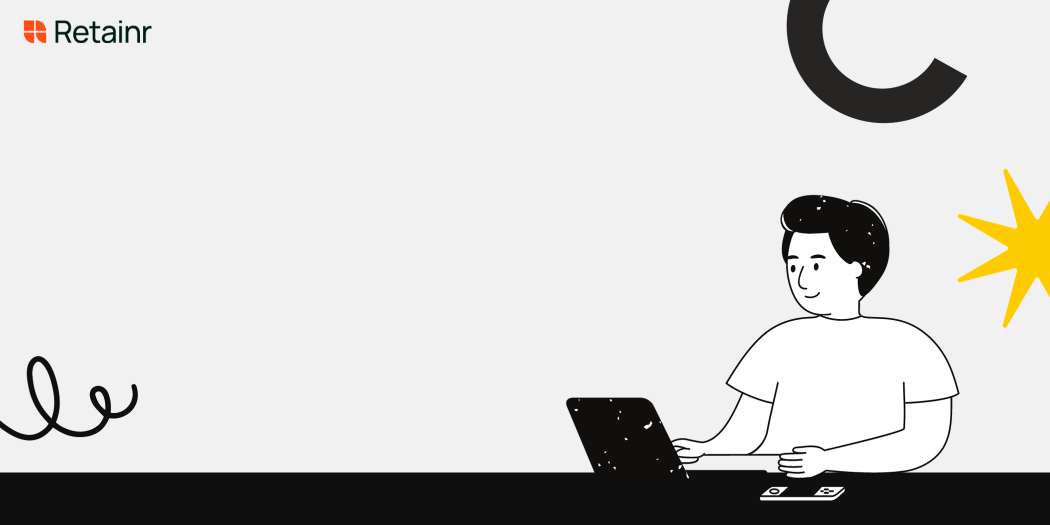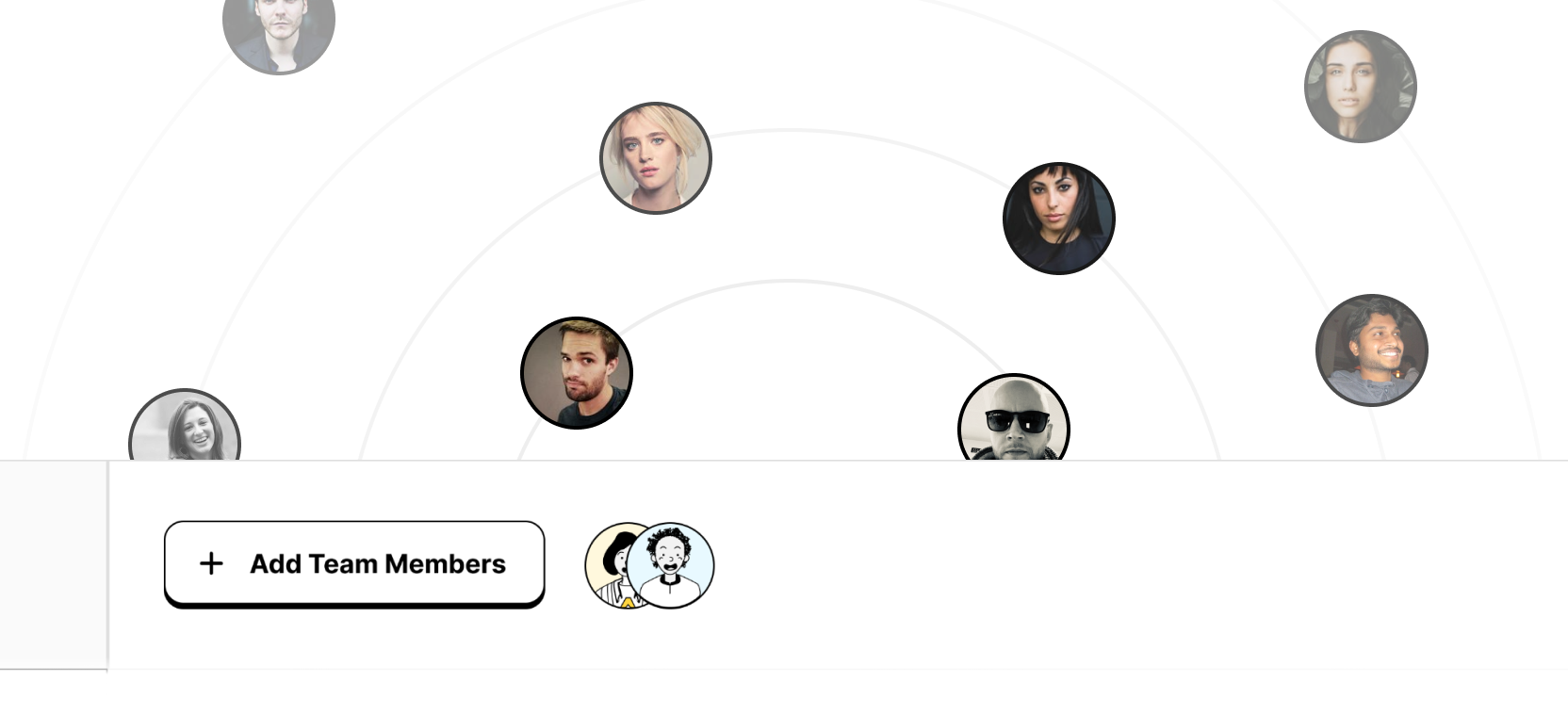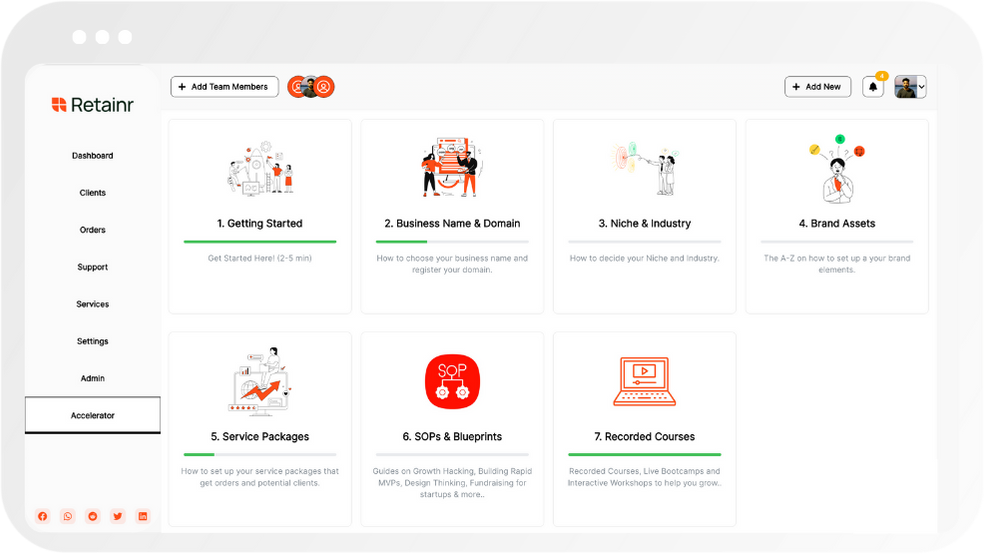
How to Manage Developers In A Remote Team
Build with Retainr
Sell your products and services, manage clients, orders, payments, automate your client onboarding and management with your own branded web application.
Get Started1. How can I effectively communicate with my remote development team?
Effective Communication Strategies
Ensuring effective communication is vital for managing a remote developer team. Firstly, establish clear communication channels. This could be emails, chat platforms, or video conferencing software. Everyone should know what tool to use and what information will be shared there. Secondly, set expectations when it comes to response time. It's hard to know when someone is available remotely, so it's essential to make it clear.
Here are some communication do's and don'ts:
- Do: Encourage open dialogue and accept constructive criticism
- Don't: Assume that everyone understands you perfectly. Always clarify your points.
- Do: Regularly seek out feedback to ensure everyone feels heard
- Don't: Use technical jargon excessively, especially if some team members may not understand
Implement Regular Check-ins
Regular check-ins are a great way to keep up to date on your team's progress. They also allow you to answer questions and provide guidance. Check-ins can take many forms, including one-on-one meetings and team meetings. Choose the best format according to your team size and the nature of the work.
Use Task Management Tools
To keep track of all the tasks and goals, using a task management tool can be very helpful. Tools like Asana, Jira or Trello let you assign tasks, set deadlines, and follow up on work right from your own desk. Here is a simple comparison of these tools:
| Tool | Best for | Notable Feature |
|---|---|---|
| Asana | General Project Management | Ability to create custom workflows |
| Jira | Agile Development teams | Advanced reporting features |
| Trello | Simple, Visual Task Management | Easy-to-use boards and cards system |
2. What tools or platforms are best for managing remote developers?
Using the Right Tools for Communication and Project Management
Managing remote developers becomes easier with the right set of tools. For seamless communication, Slack is a popular choice, allowing for streamlined interactions across different teams and departments. Besides messaging, it supports videoconferencing, and file sharing, making distributed team communication significantly smoother. Another tool is Microsoft Teams, which caters to chat, video meetings and storage. For occasional face to face interaction, applications like Zoom and Google Meet are excellent.
- Slack - Messaging, file sharing, video calls
- Microsoft Teams - Chat, video meetings, file storage
- Zoom/Google Meet - Video conferencing and meetings
Task Assignment and Progress Tracking Tools
Next in line are tools for project management, task assignments, and progress tracking; crucial for any developer team. Jira and Trello, for instance, provide a visual way to manage tasks across a team, track the work progress and catch any discrepancies. Another excellent tool is Asana which is great for project management and allows you to keep a tab on all the ongoing tasks and related updates.
| Tool | Functions |
|---|---|
| Jira | Task management, Tracking progress |
| Trello | Managing team tasks, Project management |
| Asana | Project management, Task tracking |
Code Management and Reviewing Tools
For code management and review, GitHub is largely used. It's a platform where developers can push code, collaboratively work on projects, and do code reviews. Bitbucket is another option for code review and collaboration, with an additional feature of continuous integration and continuous delivery (CI/CD) pipelines. Then there is GitLab, a web-based repository manager that provides Git repository management, code reviews, issue tracking, and CI/CD pipeline features.
- GitHub - Code management, Collaborative work, Code reviews
- Bitbucket - Code review, Collaboration, CI/CD pipelines
- GitLab - Git repository management, Code reviews, Issue tracking, Continuous integration/delivery
3. How can I keep my remote developers motivated and engaged?
Keeping Remote Developers Motivated and Engaged
Several strategies can be implemented to keep your remote developers motivated and engaged. First, establish clear and achievable goals. With SMART (Specific, Measurable, Achievable, Realistic, and Timely) objectives, each developer understands their part in the common project, which keeps them motivated to perform. Second, provide regular feedback. Acknowledge their hard work and accomplishments, as well as guide them through the areas they need to improve. Lastly, assign projects that match their interests and skills. Working on something that they are passionate about can greatly improve their motivation.
Utilize Virtual Team Building Activities
Promoting team cohesion can also improve motivation and engagement. You can use several virtual team building activities such as virtual games, online workshops, and group video calls. You could even initiate virtual coffee breaks or dinners where everyone can relax and socialize. This table presents a few quick and fun virtual team building activities along with the estimated duration:
| Activity | Duration |
|---|---|
| Virtual Escape Room | 1 hour |
| Online Trivia Quiz | 30 minutes |
| Virtual "Get to know" games | 15-45 minutes |
Offer Flexible Working Hours and Continuous Learning Opportunities
Flexibility and growth opportunities are essential for many developers. Offering flexible working hours enables developers to work during their most productive hours, improving their performance and satisfaction. Providing continuous learning opportunities, like access to latest industry workshops, webinars, or e-courses, is also vital. This not only helps them keep up with the latest technology trends but also shows them that you care about their personal growth and career development.
4. How can I monitor the productivity of my remote development team?
Setting Clear Expectable Outcomes
Monitoring the productivity of your remote development team begins with setting clear, measurable goals. These might include specific project milestones, code sprints, or bug fixes. It's important to make sure that these goals are achievable and realistic, otherwise your team may become overwhelmed and demotivated.
- Set specific, measurable, achievable, relevant, and time-bound (SMART) goals
- Communicate these clearly to your team and make sure they understand what is expected
- Use project management software to track progress and encourage transparency
Using the Right Tools
To accurately measure your team's productivity, consider using project management and tracking tools. Some popular options include Jira, Slack, and Basecamp, which allow you to see what each member of your team is working on and how much they've accomplished. Additionally, using version control systems like Git can help you keep track of changes to your codebase and who has made them.
| Tool | Function |
|---|---|
| Jira | Project management and tracking |
| Slack | Communication and collaboration |
| Basecamp | Project management and ideation |
| Git | Version control |
Communication and Feedback
Finally, maintaining effective communication with your remote development team is crucial. Regular check-ins and feedback sessions can help address any issues or concerns that may come up, and help you gauge your team's productivity. Encourage your team to share their progress, challenges and ideas regularly and openly.
- Schedule regular meetings, keeping in mind team member's time zones
- Use video conferencing tools like Zoom for face-to-face communication
- Provide timely, constructive feedback on your team's work
5. What are the challenges in managing a remote development team and how can I overcome them?
Challenges in Managing a Remote Development Team
There are several challenges that a manager can experience when trying to handle a remote development team. Firstly, there is the problem of communication. Working remotely means that team members can be geographically widespread, working in different time zones, which makes real-time collaboration difficult. Secondly, fostering a healthy and productive team culture can be tough. Building trust, unity, and a sense of community can be challenging due to lack of face-to-face interaction. Lastly, tracking progress and productivity can also be difficult when managing a remote team.
Overcoming Communication Challenges
Overcoming communication challenges requires the use of efficient tools and clear communication strategies. This could involve:
- Using team communication tools such as Slack, Microsoft Teams, or Google Hangouts.
- Setting regular video calls for team updates and discussions.
- Encouraging regular updates on individual tasks and challenges.
Managing Remote Development Team Effectively
Bolstering team culture, monitoring progress, and productivity remotely need strategic planning and execution. The following strategies can be used:
| Strategy | Explanation |
| Virtual Team Building Activities | Such activities can help to create a sense of community within the team and boost morale. |
| Setting Clear Expectations | Clearly stating goals, expectations, and deadlines can mitigate confusion and ensure productivity. |
| Use of the Right Tools for Tracking | Using project management and time tracking tools can help to monitor the progress and productivity of your team. |
6. How can I foster a strong team culture with a remote development team?
Fostering a Strong Team Culture
Building a strong culture with a remote development team necessitates specific tactics that promote open communication, collaboration, and team bonding. A few methods include:
- Establish clear communication channels: Developers should know where and when to communicate about different issues. It's recommended to use tools such as Slack, Microsoft Teams, or Google Hangouts for instant communication and a project management tool like Trello or Jira for task-specific discussions.
- Promote virtual team bonding: Team building doesn't have to be in person. Remote development teams can participate in virtual happy hours or play online team-building games to foster a sense of bonding and camaraderie.
- Empower team members: Each developer should have a sense of ownership over their part of the project. This can be fostered through specific roles and responsibilities, and ensuring that their opinions are valued in team discussions.
Key Strategies to Foster Strong Team Culture
The table below sums up the key strategies you can implement to nurture a cohesive and productive remote development team culture.
| Strategy | Description |
|---|---|
| Regular Check-ins | Regularly schedule time for team meetings and individual check-ins. This helps to maintain engagement and ensure everyone is on the same page. |
| Celebrate Milestones | Acknowledge and celebrate individual, team or project milestones. This can even be simple, like commenting on completed tasks within your project management platform. |
| Encourage Collaboration | Encourage developers to work together creatively. For instance, pair programming is an effective method for knowledge sharing and team bonding. |
Consistent Feedback and Recognition
Reinforcing positive team culture also requires a consistent feedback and recognition system. Regularly give developers constructive feedback and recognize their hard work and accomplishments. This not only fosters a culture of continuous improvement and motivation but also makes the team feel valued, which is instrumental in maintaining and enhancing productivity.
7. What strategies can I use to build trust and rapport with my remotely-located developers?
Establishing Open Communication
The first and arguably most crucial component of building trust and rapport with your remotely-located developers is open communication. Regular meetings and one-on-ones are a must, ideally through video calls to add a personal touch. Also, make use of chat platforms like Slack for day-to-day communication, and project management tools like Jira to stay updated on progress. Keep these meetings and updates regular but not excessive, and make sure they respect different time zones:
- Weekly team meetings.
- Monthly one-on-ones.
- Daily updates on Slack.
- Use project management tools for task tracking.
Creating a Culture of Trust
Another important strategy to build trust and rapport is to foster a culture of trust and inclusiveness. Encourage your team members to share their ideas and opinions, involve them in decision-making processes and give them a sense of ownership. Recognition is another powerful tool - acknowledge their hard work and successes, and give constructive feedback and support in overcoming their weaknesses:
- Show appreciation for their work regularly.
- Provide constructive feedback to fuel growth.
- Include every team member in key decision-making processes.
- Create an inclusive and welcoming environment.
Developing and Maintaining Professional Relationships
Remember to carve out time for developing professional relationships with your team. Arrange social meet-ups to connect and bond in a relaxed environment. Many companies organize virtual team events to facilitate this even when remote. Here is a breakdown of activities that can help develop trust and rapport:
| Activity | Description |
|---|---|
| Virtual team-building activities | Activities such as online quizzes, gaming nights, or even virtual coffee chats can serve as great ways to relax and bond. |
| Sharing personal successes | Create a platform or opportunities for team members to share personal successes and anecdotes. This can help team members get to know each other better beyond just work. |
| Regular feedback sessions | These sessions can help in opening up communication lines and understanding each other better. They also help in resolving any issues early on rather than letting them escalate. |
8. How should I handle performance issues within a remote development team?
Identifying Performance Issues
Handling performance issues in a remote development team first starts with identifying the issues. These may range from low productivity, missing deadlines, frequent mistakes in code, or delayed communication. Use tools like project management software or team productivity tools to monitor work output and have regular check-ins to discuss any visible gaps. It's also crucial to consider the feedback from team members and client complaints, if any.
- Low productivity: Track using productivity tools.
- Missed deadlines: Monitor with project management software.
- Frequent mistakes: Review code commits and testing reports.
- Delayed communication: Keep a tab on communications via email, chat or updates on task boards.
Addressing Performance Issues
Once performance issues are identified, they should be addressed promptly to prevent any negative influence on the whole team. Start by discussing the problem with the team member in question. Ensure understanding of the benchmarks and expected outputs. Offer feedback on areas of improvement and also appreciate areas of strength. Offer assistance where needed - this could be in the form of training, tools or offering more time for certain tasks. Timing and tone of communication is key to ensure the matter is addressed without leading to demotivation or stress.
Performance Evaluation
Consistently evaluate performance using clear and measurable metrics. Typically, performance evaluation involves the use of tables showing various performance metrics over different periods. Below is an example of how you may want to organize such a table:
| Metric | Q1 | Q2 | Q3 | Q4 |
|---|---|---|---|---|
| Productivity | # | # | # | # |
| Deadlines met | # | # | # | # |
| Mistakes | # | # | # | # |
| Communication | # | # | # | # |
Prompt performance evaluation not only allows you to keep track of your team's performance, but also signals to your team that their work is being noticed and valued, which can facilitate further improvements.
9. How can I effectively manage deadlines with a team of remote developers?
Importance of Clear Communication
Managing deadlines with a remote team of developers can seem daunting especially given the distance and lack of physical oversight. Clear, unambiguous communication is the cornerstone of effectively managing deadlines. To ensure clarity, highlighting expectations through project management tools or a shared Google Doc is advisable. A list of key items to discuss would include:
- Specific tasks for each developer
- Start and end dates for each task
- Potential dependencies or roadblocks
The Use of Time-Zone Friendly Tools
The remote working arrangement often means you have team members who may be working in different time zones. Therefore, it is crucial to use time zone friendly tools that enable each developer to receive and work on their assignments regardless of location or time difference. Online project management tools like Slack, Trello, or Zoho are beneficial in managing and tracking tasks. Below is an example of how an online task board might look:
| Task | Developer | Start Date | End Date | Status |
|---|---|---|---|---|
| Frontend Design | Jane Doe | 24th Mar | 31st Mar | In Progress |
Regular Follow-ups and Feedback
Consistent follow-ups and feedback are essential. Regular check-ins provide an opportunity to address any issues, clarify doubts, and give feedback. It's also important to keep the lines of communication open for the developers to reach out whenever they need to. You can adopt strategies such as:
- Weekly virtual team meetings to discuss tasks and progress.
- One-on-One video calls for personal feedback and addressing individual concerns.
- Create a shared digital space for team collaboration.
10. How can I coordinate and manage different time zones within a remote development team?
Understanding Time Zones
Managing time zones across a remote development team can be a tough task. The first step towards this challenge is gaining a comprehensive understanding of the time zones of each team member. Tools such as Every Time Zone or World Time Buddy can help you visualize time differences. Once you have this understanding, you can strategize on the best ways to manage team interactions:
- Set rotating meeting schedules. This approach lessens the burden of always having team members attend meetings outside their usual hours.
- Use shared calendars. It will allow each team member to view the schedule in their own time zone.
- Set 'core hours' where everyone in the team is available. Sending important communications or conducting team activities during these hours will ensure everyone’s involvement.
- Avoid sending communications outside of a member's usual working hours, it will help establish a work-life balance.
Establishing a Work Schedule
Creating a clear work schedule with specific responsibilities helps in efficient time zone management. Here's an example:
| Team Member | Time Zone | Working Hours | Core Hours |
|---|---|---|---|
| John | PST | 9:00 - 17:00 | 11:00 - 15:00 |
| Emma | GMT | 8:00 - 16:00 | 10:00 - 14:00 |
| Raj | IST | 10:00 - 18:00 | 13:00 - 17:00 |
Implementing Asynchronous Communication
Asynchronous communication, where responses are not expected immediately, is critical while managing remote developers across different time zones. It ensures that everyone has enough time to handle their tasks and respond at their convenience. Here are some steps you could consider:
- Use communication tools with robust archival and search capabilities, like Slack or Teams.
- Reduce the need for real-time interactions by documenting processes and creating guides.
- Reconsider if a meeting could be an email. Share detailed agendas and summaries for those who cannot attend.
Conclusion
Managing Remote Development Teams
Managing developers in a remote team presents unique challenges, including communication issues, tracking productivity, and ensuring focus on priority tasks. Optimizing a remote teams' performance requires a balance of effective management, clear communication, and the right tools.Channeling Effective Communication
Without regular face-to-face interactions, it is crucial to have open and clear channels of communication. Regular meetings, detailed written instructions, and instant messaging platforms are key for effective communication.Setting Clear Goals and Deadlines
For successful project management, clarity in goals and deadlines is imperative. This offers a clear direction, helping remote developers prioritize their tasks and manage their time more effectively.Monitoring Productivity
Tracking productivity remotely can be a challenge. To ensure an objective assessment, rely on performance metrics and regular updates.The Right Tools for Task Management
Retainr.io is a robust tool designed to facilitate project management for remote teams. It provides a whitelabel platform to sell, manage clients, orders, and payments within your own branded app. With Retainr.io, managing remote development teams becomes streamlined and transparent.Deliver Feedback Regularly
Continuous feedback is the core of improvement. Providing constructive criticism and acknowledging accomplishments goes a long way in motivating and fostering a positive work environment.Retainr.io: The Perfect Tool to Manage Your Remote Development Team
Overall, managing remote developers effectively hinges on creating a well-organized, communicative, and transparent work environment. Retainr.io provides the perfect software to help make this a reality. Explore Retainr.io today and take your remote project management to the next level.Boost Your Agency Growth
with Retainr Accelerator
Uncover secrets, strategies, and exclusive blueprints to take your agency's growth to the next level — from marketing insights to effective presentations and leveraging technology.

SOPs, Cheatsheets & Blueprints
Leverage 50+ SOPs (valued over $10K) offering practical guides, scripts, tools, hacks, templates, and cheat sheets to fast-track your startup's growth.
Connect with fellow entrepreneurs, share experiences, and get expert insights within our exclusive Facebook community.
.jpg)

Join a thriving community of growth hackers. Network, collaborate, and learn from like-minded entrepreneurs on a lifelong journey to success.

Gain expertise with recorded Courses, Live Bootcamps and interactive Workshops on topics like growth hacking, copywriting, no-code funnel building, performance marketing and more, taught by seasoned coaches & industry experts.

.jpg)

.jpeg)


